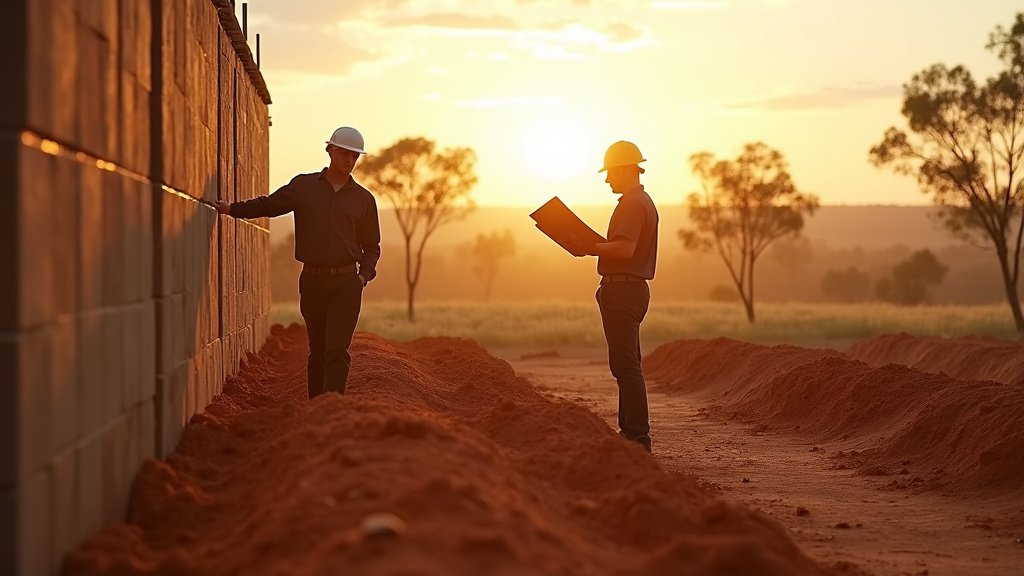In a significant development for the construction world, Australian engineers have unveiled a revolutionary building material that promises to dramatically reduce the environmental impact of construction. Developed by researchers at RMIT University, this innovative material, known as cardboard-confined rammed earth (CCRE), offers a sustainable alternative to traditional concrete, boasting approximately one quarter of its carbon footprint while simultaneously addressing landfill waste. This groundbreaking news signals a major step towards achieving global net-zero goals in the built environment.
The Innovation: Cardboard, Soil, and Water Reimagined
The core of this breakthrough lies in its simplicity and ingenious combination of readily available materials: cardboard, soil, and water. Unlike conventional concrete production, which is energy-intensive and a significant source of global carbon emissions, CCRE entirely eliminates the need for cement. The construction process involves compacting a mixture of local soil and water within formwork made from cardboard tubes. This method can be carried out on-site, either manually or with machinery, significantly reducing the logistical challenges and costs associated with transporting heavy materials like bricks, steel, and concrete.
Environmental Advantages: A Greener Footprint
The environmental benefits of CCRE are substantial. Cement and concrete production alone contribute around 8% of annual global emissions. By replacing cement with cardboard, the new material slashes the carbon footprint by roughly 75%. Furthermore, it tackles the burgeoning issue of landfill waste in Australia, where over 2.2 million tons of cardboard and paper are discarded annually. Repurposing this cardboard as structural formwork not only diverts waste from landfills but also completes a closed-loop lifecycle, as the cardboard can be recycled or reused in new projects once a building reaches the end of its service life.
Practical Benefits and Ideal Applications
Beyond its environmental credentials, cardboard-confined rammed earth offers significant practical advantages. It is considerably more cost-effective than concrete, coming in at under one third of the price. The use of on-site obtainable soil and lightweight cardboard formwork drastically cuts transport costs and simplifies logistics, making it particularly suitable for construction in remote areas where red soils – ideal for rammed earth – are abundant, such as in regional Australia.
CCRE also excels in hot climates. Rammed earth structures possess high thermal mass, which naturally regulates indoor temperatures and humidity. This passive climate control reduces the reliance on energy-intensive mechanical cooling systems, further lowering operational carbon emissions and energy bills over a building’s lifespan. The strength of the material can be tailored by adjusting the thickness of the cardboard tubes, and researchers have developed formulas to predict this relationship, ensuring structural integrity for low-rise buildings. Further research by the RMIT team has also explored integrating carbon fiber with rammed earth to achieve strength comparable to high-performance concrete, opening possibilities for more complex structures.
The Minds Behind the Material
This pioneering work was led by Dr. Jiaming Ma, an Associate Lecturer in Civil and Infrastructure Engineering at RMIT University, who has a strong research interest in material and structure innovation for sustainability. He was supported by Emeritus Professor Yi Min ‘Mike’ Xie, an expert in structural optimization. Their findings were published in the British journal Structures, detailing the material’s properties and potential. The inspiration for using cardboard as a structural component was partly drawn from innovative uses of cardboard in disaster relief shelters, such as Shigeru Ban’s Cardboard Cathedral in New Zealand.
A Global Trend Towards Sustainable Construction
The development of cardboard-confined rammed earth aligns with a growing global movement towards sustainable construction practices and the principles of the circular economy. As the world increasingly focuses on achieving net-zero emissions, there is a rising demand for materials that minimize environmental impact, reduce waste, and utilize locally sourced resources. The construction sector is one of the largest contributors to global emissions and waste, making innovations like CCRE crucial for a greener future.
Future Outlook
RMIT University is actively seeking industrial partners to pilot full-scale projects and establish on-site tube manufacturing pathways for this novel material. The potential for cardboard-confined rammed earth to revolutionize building design and construction, offering a low-carbon, cost-effective, and sustainable solution, is immense. As the industry continues to seek eco-friendly alternatives, this Australian innovation stands out as a beacon of progress, demonstrating how simple, repurposed materials can pave the way for a more sustainable built environment worldwide.

